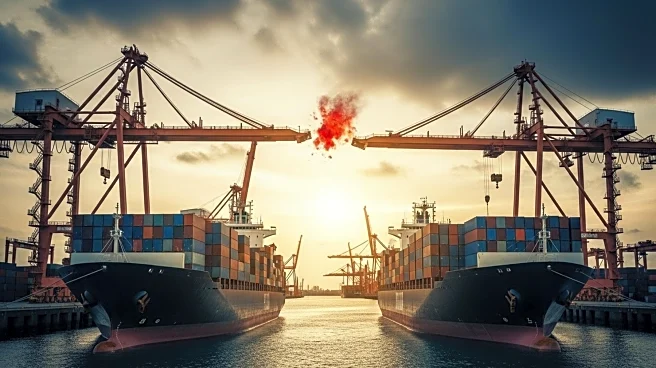What's Happening?
China's Ministry of Transportation has announced special port fees for U.S. vessels, responding to U.S. port fees on Chinese ships. The fees, starting at 400 RMB per net ton, will increase annually until 2028. The move is part of ongoing trade tensions between the two nations, with the U.S. accusing China of unfairly dominating global shipping. The fees apply to ships with significant U.S. interest, including those built in the U.S. or flying the U.S. flag. Analysts suggest the fees are largely symbolic due to the small size of the U.S. merchant marine, but they reflect broader geopolitical dynamics.
Why It's Important?
The reciprocal port fees add complexity to global trade networks, potentially affecting shipping costs and operations. The measures reflect ongoing tensions between the U.S. and China, with implications for international economic stability and trade relations. The situation may impact industries reliant on maritime trade, including technology and manufacturing, potentially leading to higher consumer prices. The fees highlight competitive dynamics in global shipping, with potential long-term implications for international trade agreements.
What's Next?
The fees are set to take effect soon, with potential impacts on shipping operations and costs. The trade conflict may influence upcoming negotiations between the U.S. and China, potentially affecting future trade agreements and economic policies. Stakeholders in the shipping industry may need to adjust their strategies to mitigate financial impacts. The situation could lead to further retaliatory measures, affecting global supply chains and economic growth.
Beyond the Headlines
The trade conflict underscores the strategic importance of maritime regulations in international relations. The reciprocal fees highlight competitive dynamics between the U.S. and China in global shipping and trade. The situation raises questions about the long-term implications for international trade agreements and the role of protectionist policies in shaping global economic landscapes.











